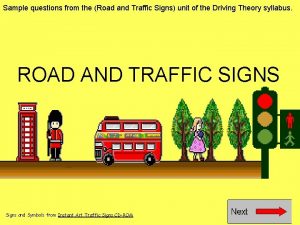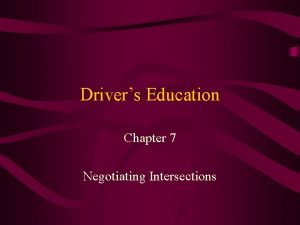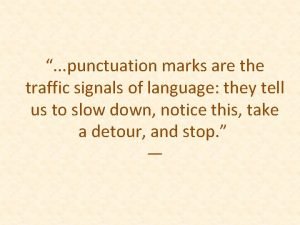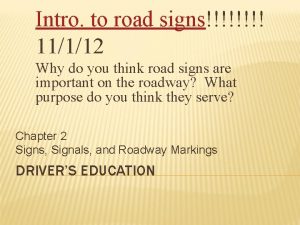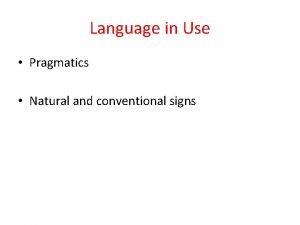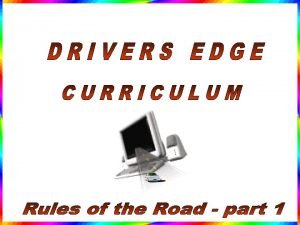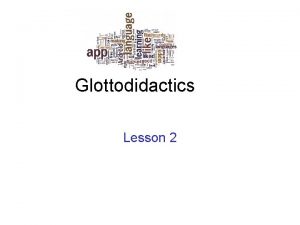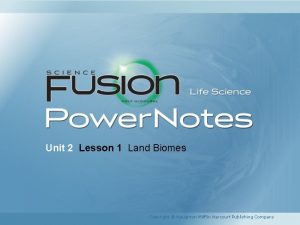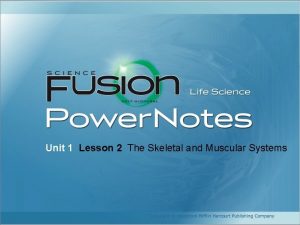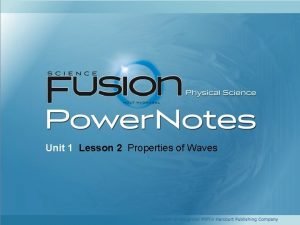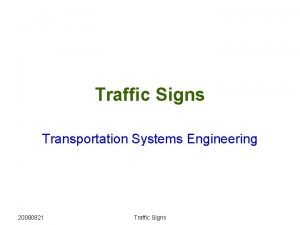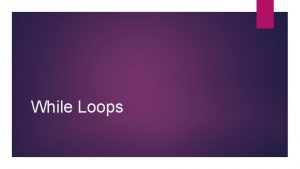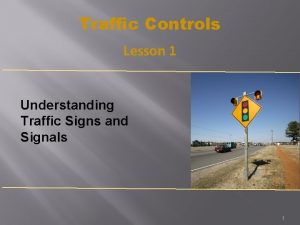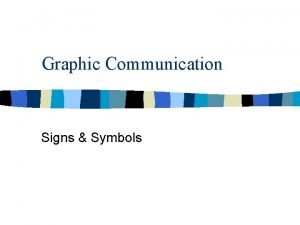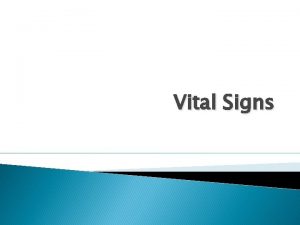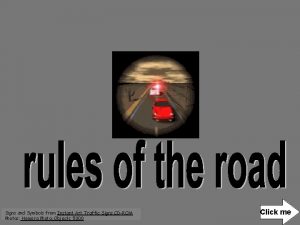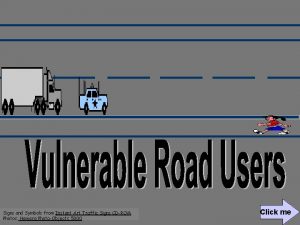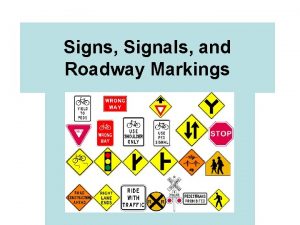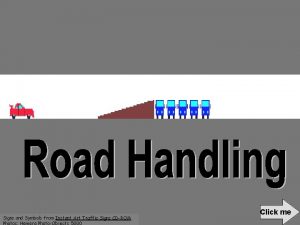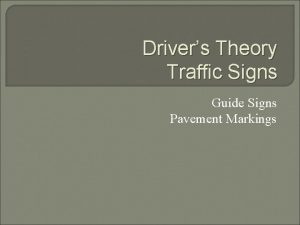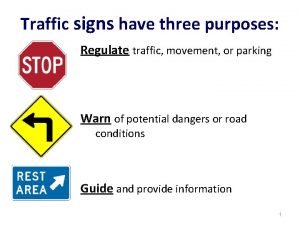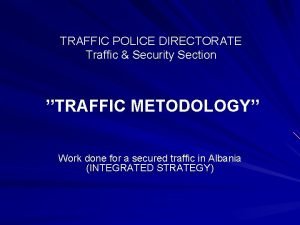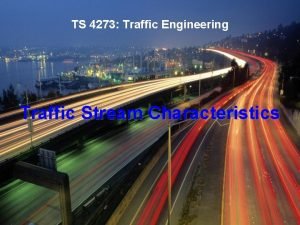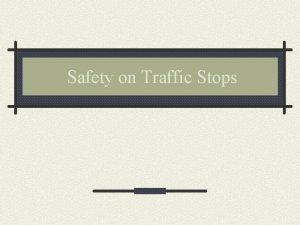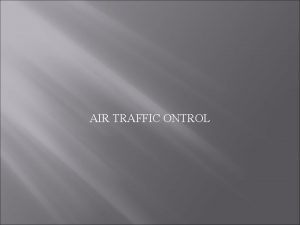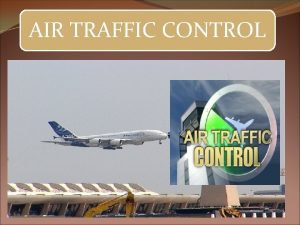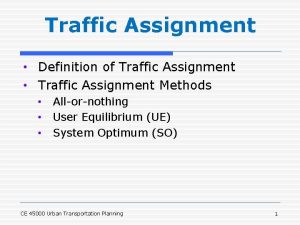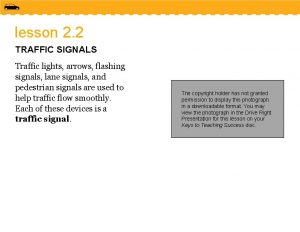lesson 2 1 TRAFFIC SIGNS While traffic signs
































- Slides: 32

lesson 2. 1 TRAFFIC SIGNS While traffic signs may give commands, set limits, or provide alerts, each sign has a specific shape and color. The copyright holder has not granted permission to display this photograph in a downloadable format. You may view the photograph in the Drive Right Presentation for this lesson on your Keys to Teaching Success disc.

Describe the shapes and colors of regulatory OBJECTIVE and warning signs and how to respond to each one.

Shapes and Colors You will see many different traffic signs as you drive. Some signs have words only, some have symbols only, and some signs have a combination of words and symbols. Each sign’s shape and color has a special meaning.

OBJECTIVE Explain how regulatory signs control traffic.

Signs that set limits or give commands are regulatory signs. Regulatory signs, which you must obey, control traffic. The most important regulatory signs—the STOP sign and the YIELD sign—have unique shapes. All other regulatory signs are either white squares or rectangles with red or black lettering.

STOP Sign A STOP sign tells you where to stop. It may be used where any two—and sometimes more—streets intersect. You may see a STOP sign on two corners or four corners of the intersection. Sometimes when there is a crosswalk, you may see a STOP sign in the middle of the street.

Always come to a complete stop at a STOP sign. The location of a STOP sign or stop line indicates where to make a legal stop. If there is no stop line, make a full stop at the STOP sign before entering the intersection.

You are approaching this STOP sign. Where will you stop?

If your field of vision is blocked, move ahead slowly and prepare to stop again. Make sure the way is clear before driving into the intersection.

At a 4 -way or all ways STOP sign: • The driver who stopped first should be allowed to go first. • When vehicles stop to the right or left of each other at the same time, the driver on the right should be allowed to proceed first. • When stopped across the intersection facing oncoming traffic, the driver going straight should be allowed to proceed. A driver turning left should wait. • Show your intention to proceed by moving forward slowly before entering the intersection. • Check for traffic ahead and to the sides before entering the intersection.

The yellow car shows where to stop at a stop line. If both cars stopped at the same time, which driver has the right of way at this 4 -way stop?

YIELD Sign YIELD signs are found where roadways cross or merge. • Always slow down and check traffic in front of you and behind you. • By slowing enough ahead of time, you can often proceed without completely stopping. • Be prepared to stop. • Proceed only when it is safe to do so.

Speed Limit Signs Speed limit signs show the maximum—and sometimes the minimum—speed allowed on that roadway. Speed limits are used to manage traffic flow at safe speeds. States are permitted to establish their own speed limits. Speed limits are set for ideal driving conditions. The copyright holder has not granted permission to display this photograph in a downloadable format. You may view the photograph in the Drive Right Presentation for this lesson on your Keys to Teaching Success disc.

When traffic, roadway, or weather conditions are not ideal, you must obey the basic speed law. The basic speed law states that you may not drive faster than is safe and prudent for existing conditions, regardless of posted speed limits. A minimum speed limit is set on some roadways, such as expressways, to keep traffic moving safely. This speed limit tells you not to drive slower than the posted minimum speed unless conditions are less than ideal.

An advisory speed limit is set for special conditions such as sharp curves and is often posted below a warning sign. Resume normal speed once road conditions return to ideal.

School zones have special speed limits when children are present or during school hours. Night driving speed limits may be lower than daylight limits.

Other Regulatory Signs In addition to STOP signs, YIELD signs, and speed limit signs, other regulatory signs are used to direct traffic and to control parking and passing.

Most regulatory signs are rectangles. Some regulatory signs look like this. The slash means the action shown by the black symbol is prohibited.

Warning Signs A warning sign alerts you to hazards or changes in the condition of the road ahead. Most warning signs look like those shown below. Be prepared to slow or stop when you see a warning sign.

Pedestrian or School-Zone Signs A school zone is a portion of a street or highway near a school that is subject to special speed limits. When you see a pedestrian crossing or school-zone sign, be prepared to slow down and proceed carefully.

A school-zone sign, showing only two figures, is posted within a block of a school. A school-crossing sign has lines that represent a sidewalk. This sign is posted near intersections or crossings used by children.

Railroad Advance Warning Sign The railroad-crossing advance-warning sign warns motorists of a railroad crossing ahead. The crossing sign may have the number of tracks posted on it. Be sure that a second train is not coming from the opposite direction. Flashing red lights or crossing gates might be added to alert you when a train is coming.

Construction and Slow. Moving-Vehicle Signs An orange construction sign alerts you that you are about to enter a work zone. You must also follow directions from any worker directing traffic. Many states now increase fines for violations in construction zones.

A slow-moving-vehicle sign warns other drivers that the vehicle is traveling slower than other traffic.

OBJECTIVE Explain how guide signs and international signs help you when driving.

Guide Signs Guide signs mark routes, intersections, service areas, and other points of interest or information.

Route Signs Local, state, U. S. , and interstate route signs vary according to the type of roadway. State and county route markers will vary from state to state.

Interstate route signs are red, white, and blue shields. An east-west route is even numbered. A north-south route is odd numbered.

A three-figured route that starts with an odd number leads into a city. A three-figured route that starts with an even number goes around a city.

Other Guide Signs Green signs provide information on destinations ahead and distances to be traveled. Blue signs highlight highway services. Brown signs direct you to recreational areas or cultural points of interest.

International Signs International signs convey information by symbols rather than words. Drivers who travel from country to country can understand the meaning of these signs without learning several languages.

lesson 2. 1 review 1. Describe the colors and shape of warning signs. How should you proceed when you see one? 2. Compare the action you should take at a STOP sign with the action you should take at a YIELD sign.
 Sign shapes meaning
Sign shapes meaning While do loop
While do loop Incomina
Incomina Intelligent traffic solutions
Intelligent traffic solutions Vertical rectangles tell drivers:
Vertical rectangles tell drivers: What shape are traffic signs giving orders
What shape are traffic signs giving orders Controlled railroad crossings usually have
Controlled railroad crossings usually have A clever dog knows its master
A clever dog knows its master A short section of corrugated roadway that warns of hazards
A short section of corrugated roadway that warns of hazards Orange, diamond-shaped signs warn the motorist of:
Orange, diamond-shaped signs warn the motorist of: Conventional sign example
Conventional sign example Railroad signs and meanings
Railroad signs and meanings The diamond shape is used exclusively for _____ signs.
The diamond shape is used exclusively for _____ signs. Lesson outline lesson 3 describing circuits answers
Lesson outline lesson 3 describing circuits answers Lesson outline lesson 3 mountain building answers
Lesson outline lesson 3 mountain building answers Lesson outline lesson 2 aquatic ecosystems answer key
Lesson outline lesson 2 aquatic ecosystems answer key Micro lesson planning
Micro lesson planning L 101 lesson 2
L 101 lesson 2 Where did ravi hide the kitten
Where did ravi hide the kitten Chapter 1 lesson 1 your total health lesson 1 quiz
Chapter 1 lesson 1 your total health lesson 1 quiz Lesson outline lesson 3 answer key
Lesson outline lesson 3 answer key Sat vocabulary lesson 4
Sat vocabulary lesson 4 Lesson 2 physical properties answer key
Lesson 2 physical properties answer key Lesson outline lesson 1 solids liquids and gases answer key
Lesson outline lesson 1 solids liquids and gases answer key Lesson outline climates of earth
Lesson outline climates of earth Glottodidactics
Glottodidactics Understanding science worksheet answers lesson 1
Understanding science worksheet answers lesson 1 Today lesson or today's lesson
Today lesson or today's lesson Lesson 1 land biomes answer key
Lesson 1 land biomes answer key Lesson 4 gravity and motion lesson review
Lesson 4 gravity and motion lesson review Lesson outline lesson 2 the muscular system answer key
Lesson outline lesson 2 the muscular system answer key Lesson outline lesson 2 wave properties answer key
Lesson outline lesson 2 wave properties answer key Today's lesson or today lesson
Today's lesson or today lesson





